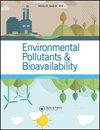活性炭和纳米炭在芳香水稻愈伤组织诱导和植株再生中的应用
Q3 Chemical Engineering
引用次数: 21
摘要
摘要纳米技术在农产品上的应用研究也很少,尤其是在植物再生方面。研究了活性炭和纳米炭对香稻愈伤组织诱导和植株再生的影响。在愈伤组织诱导再生培养基中加入活性炭。在愈伤组织诱导培养基中添加活性炭(100-500 mg L−1),活性炭显著降低了愈伤组织诱导率和生物量积累(鲜重、干重和大小)。而在添加100 mg L−1活性炭的再生培养基中,植株再生率最高(61.90%),幼苗数与再生愈伤组织数(RSR)之比最高;3.06),来源于愈伤组织诱导培养基(不含活性炭)。在不添加纳米碳的愈伤组织诱导培养基中,添加5 mg L−1纳米碳的愈伤组织诱导率最高(94.70%),绿斑率最高(95.83%),植株再生率最高(60.42%),RSR为3.12。然后,在再生培养基中加入纳米碳。在添加20 mg L−1纳米碳的再生培养基中,绿斑率(96.08%)、植株再生率(62.75%)和RSR(3.16)最高。本试验表明,活性炭和纳米炭的最佳浓度对芳香稻愈伤组织诱导和植株再生频率有促进作用。本文章由计算机程序翻译,如有差异,请以英文原文为准。
Application of activated charcoal and nanocarbon to callus induction and plant regeneration in aromatic rice (Oryza sativa L.)
Abstract The investigations of nanotechnology with the application on agricultural products also have been few reported, especially the plant regeneration. The effects of activated charcoal and nanocarbon on the callus induction and plant regeneration of aromatic rice were studied. Activated charcoal was added into the callus induction and regeneration medium. The presence of activated charcoal in the callus induction medium (100–500 mg L−1), activated charcoal significantly reduced the percentage of the callus induction and biomass accumulation (fresh weight, dry weight and size). Whereas, the regeneration medium supplemented with 100 mg L−1 of activated charcoal showed the highest percentage of plant regeneration (61.90%) and the ratio of the number of seedlings to the number of regenerated calli (RSR; 3.06) that derived from the callus induction medium (without activated charcoal). Moreover, the induced calli derived from the callus induction medium supplemented with nanocarbon at 5 mg L−1 showed the highest percentage of callus induction (94.70%), the percentage of green spots (95.83%), the percentage of plant regeneration (60.42%) and the RSR (3.12) when transferred the calli into the regeneration medium (without nanocarbon). After that, nanocarbon was also added into the regeneration medium. The percentage of green spots (96.08%), the percentage of plant regeneration (62.75%) and the RSR (3.16) obtained from the regeneration medium supplemented with 20 mg L−1 of nanocarbon showed the highest values. This experiment showed that the optimum concentration of activated charcoal and nanocarbon had potential to enhance the callus induction and plant regeneration frequencies in tissue culture medium of aromatic rice.
求助全文
通过发布文献求助,成功后即可免费获取论文全文。
去求助
来源期刊
CiteScore
1.62
自引率
0.00%
发文量
0
审稿时长
1 months
期刊介绍:
Chemical Speciation & Bioavailability ( CS&B) is a scholarly, peer-reviewed forum for insights on the chemical aspects of occurrence, distribution, transport, transformation, transfer, fate, and effects of substances in the environment and biota, and their impacts on the uptake of the substances by living organisms. Substances of interests include both beneficial and toxic ones, especially nutrients, heavy metals, persistent organic pollutants, and emerging contaminants, such as engineered nanomaterials, as well as pharmaceuticals and personal-care products as pollutants. It is the aim of this Journal to develop an international community of experienced colleagues to promote the research, discussion, review, and spread of information on chemical speciation and bioavailability, which is a topic of interest to researchers in many disciplines, including environmental, chemical, biological, food, medical, toxicology, and health sciences.
Key themes in the scope of the Journal include, but are not limited to, the following “6Ms”:
Methods for speciation analysis and the evaluation of bioavailability, especially the development, validation, and application of novel methods and techniques.
Media that sustain the processes of release, distribution, transformation, and transfer of chemical speciation; of particular interest are emerging contaminants, such as engineered nanomaterials, pharmaceuticals, and personal-care products.
Mobility of substance species in environment and biota, either spatially or temporally.
Matters that influence the chemical speciation and bioavailability, mainly environmentally relevant conditions.
Mechanisms that govern the transport, transformation, transfer, and fate of chemical speciation in the environment, and the biouptake of substances.
Models for the simulation of chemical speciation and bioavailability, and for the prediction of toxicity.
Chemical Speciation & Bioavailability is a fully open access journal. This means all submitted articles will, if accepted, be available for anyone to read, anywhere, at any time. immediately on publication. There are no charges for submission to this journal.

 求助内容:
求助内容: 应助结果提醒方式:
应助结果提醒方式:


